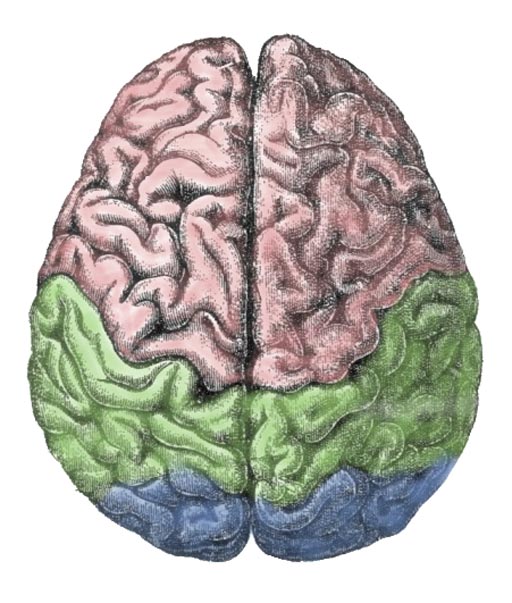Genetic Decoding Improved for Neurodevelopmental Disorders
By LabMedica International staff writers
Posted on 24 Oct 2017
DLG2 gene study as a case in point that will help facilitate future diagnosis of children with neurodevelopmental disorders (NDDs), such as intellectual disability, autism, or early-onset symptoms of psychiatric diseases such as schizophrenia.Posted on 24 Oct 2017
NDDs are a group of often severe pediatric conditions. The recent development of higher resolution genetic diagnostic tools has underlined the prevalence of genetic anomalies (e.g. gene copy-number variations) in children with NDDs.

Image: An illustration of the human brain cerebral lobes: the frontal lobe (pink), parietal lobe (green), and occipital lobe (blue) (Photo courtesy of Wikimedia).
In the study, two patients at Queen Fabiola Children's University Hospital (HUDERF; Brussels, Belgium) with NDDs (here cognitive and behavioral symptoms) showed partial loss, by deletion, of the DLG2 gene, which plays an important role in the development, plasticity, and stability of synapses.
A research team led by Dr. Guillaume Smits, Dr. Nicolas Deconinck, and Dr. Catheline Vilain of HUDERF and Prof. Gianluca Bontempi of ULB collaborated through the Interuniversity Institute of Bioinformatics in Brussels (IB), a joint research institute at Free University of Brussels (ULB; Brussels, Belgium) and Vrije Universiteit Brussel (VUB). Together, they worked at integrating large genomic, epigenomic, transcriptomic, and clinical datasets. The computational experiments, performed by Claudio Reggiani, a PhD student, pinpointed 2 novel DLG2 promoters and coding exons conserved in human and mouse and present in the fetal brain. The deletion of these new regions was found statistically associated with developmental delay and intellectual disability in 2 independent patient cohorts, supporting the pathogenic role of these new elements into the neurodevelopmental symptoms of both HUDERF patients. The findings are presented in a paper and summarized in a video.
From a medical perspective, the findings will help medical doctors in improving future diagnosing of children with NDDs. From a scientific point of view, this work shows how the in silico integration of multiple large datasets can bring knowledge about the genome. It also provides elegant progress into the molecular cause of NDDs and improves fundamental knowledge about the DLG2 gene.
The study, by Reggiani C et al, was published July 19, 2017, in the journal Genome Medicine.
Related Links:
Queen Fabiola Children's University Hospital
Free University of Brussels
Vrije Universiteit Brussel













